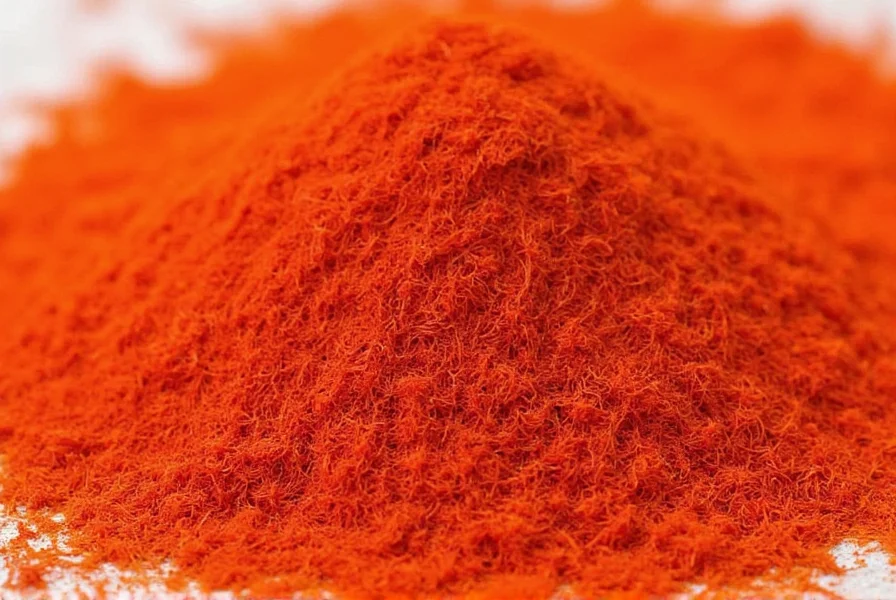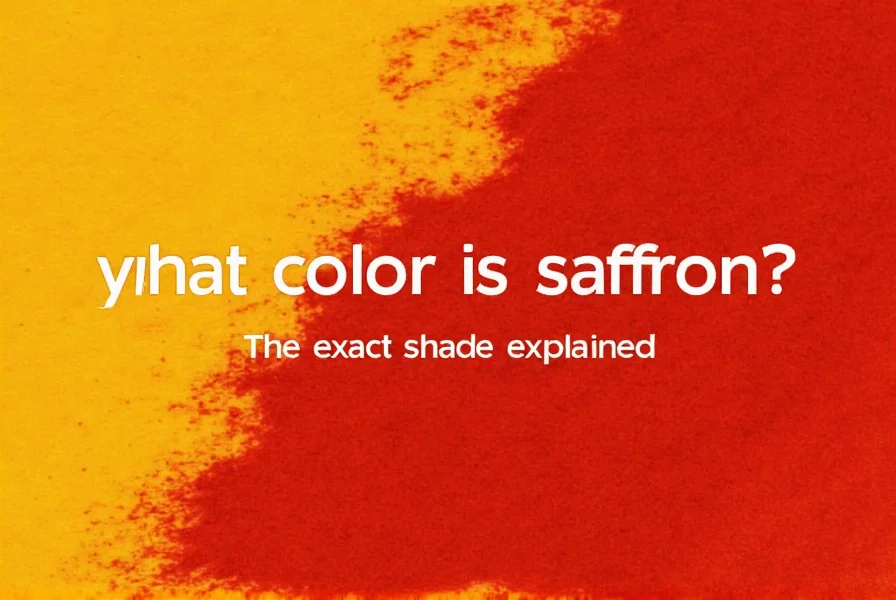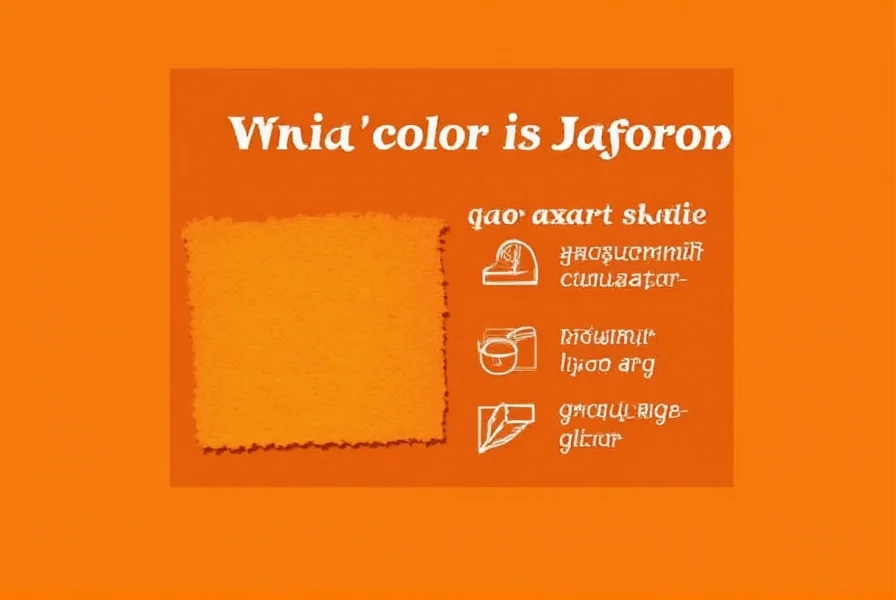When people search for what color is saffron, they're often trying to visualize this specific shade that sits between yellow and orange on the color spectrum. Unlike pure yellow or bright orange, saffron contains just enough red undertone to give it warmth while maintaining its golden brilliance.
| Color System | Saffron Color Values |
|---|---|
| Hex Code | #F4C430 |
| RGB | 244, 196, 48 |
| CMYK | 0%, 20%, 80%, 5% |
| HSL | 45°, 91%, 57% |
The precise shade of saffron has been standardized in color theory, though variations exist depending on context. In design and fashion, saffron refers to a specific golden-orange hue that's more yellow than standard orange but warmer than lemon yellow. This exact saffron color description helps distinguish it from similar shades that people often confuse with true saffron.
Origin of the Saffron Color Name
The term "saffron" as a color name directly references the precious spice derived from the Crocus sativus flower. When the stigmas of this purple crocus are harvested, dried, and processed, they produce the saffron spice that has been used for millennia as a dye, seasoning, and medicine. The distinctive golden-yellow hue that saffron imparts to foods and fabrics became so recognizable that it eventually lent its name to this specific color.
Historically, saffron dye was incredibly valuable—sometimes worth more than its weight in gold—which contributed to the color's association with luxury and sacredness in many cultures. This historical context of saffron color explains why the shade carries such cultural significance across different civilizations.

Saffron vs. Similar Colors: Understanding the Differences
Many people confuse saffron with other warm hues. Here's how to distinguish true saffron from similar shades:
- Saffron vs. Gold: While both are warm tones, gold has more metallic sheen and typically contains more yellow with subtle green undertones, whereas saffron has distinct orange-red undertones
- Saffron vs. Orange: Standard orange is more saturated and leans toward the red side of the spectrum, while saffron maintains a higher yellow component
- Saffron vs. Yellow: Pure yellow lacks the warm red undertones that characterize saffron, making saffron appear richer and more complex
When searching for what does saffron color look like, visual comparison is essential. The distinctive warmth of saffron makes it particularly valuable in design applications where a vibrant but not overly intense color is needed.
Cultural Significance of Saffron
Saffron's color carries deep meaning across various cultures:
- In India, saffron represents purity, spirituality, and sacrifice, and is one of the three colors in the national flag
- Historically, saffron robes were worn by Buddhist monks as a symbol of humility and detachment from materialism
- In ancient Rome, saffron-hued fabrics were associated with wealth and status
- Many Mediterranean cultures associate saffron with the golden light of sunset and harvest
This cultural meaning of saffron color explains why the shade continues to be significant beyond its visual properties. Understanding these associations helps when using saffron in design, fashion, or branding contexts.
Modern Applications of Saffron Color
Today, saffron appears in numerous contexts:
- Fashion: Saffron has become increasingly popular in seasonal collections, particularly for autumn and spring wear
- Interior Design: As an accent color, saffron adds warmth without overwhelming a space
- Branding: Companies use saffron to convey creativity, energy, and approachability
- Digital Design: The hex code #F4C430 is frequently specified in CSS for web elements requiring this precise shade
When designers search for how to use saffron color effectively, they're often looking for guidance on pairing this vibrant hue with complementary colors. Saffron works particularly well with deep blues, rich purples, and earthy neutrals.

Common Misconceptions About Saffron Color
Several misconceptions persist about saffron:
- Misconception: Saffron is just another word for orange Reality: Saffron has a specific position on the color spectrum with more yellow than standard orange
- Misconception: All golden-yellow shades are saffron Reality: True saffron has distinct warm undertones that differentiate it from other yellow-orange hues
- Misconception: Saffron color varies significantly depending on context Reality: While lighting affects perception, the standardized hex code #F4C430 defines the exact saffron color
Understanding these distinctions is crucial when someone asks what is the true color of saffron—particularly for design professionals who need precise color matching.
Frequently Asked Questions
Is saffron more yellow or orange?
Saffron is a balanced golden yellow-orange that contains significant elements of both colors. It has more yellow than standard orange but more red undertones than pure yellow, placing it precisely between these two colors on the spectrum. The specific hex code #F4C430 defines this exact balance.
What is the hex code for saffron color?
The standard hex code for saffron color is #F4C430. This code represents the specific golden yellow-orange hue associated with the saffron spice. In RGB values, this translates to 244, 196, 48, which design professionals use for precise color matching in digital and print media.
Why is it called saffron color?
The color is named after the saffron spice, which comes from the dried stigmas of the Crocus sativus flower. When used as a dye, these stigmas produce this distinctive golden yellow-orange hue. Historically, saffron dye was extremely valuable, sometimes worth more than its weight in gold, which contributed to the color's association with luxury and sacredness in many cultures.
How does saffron differ from gold color?
While both are warm tones, saffron and gold have distinct differences. Gold typically has more yellow with subtle green undertones and a metallic sheen, while saffron has noticeable orange-red undertones and appears more vibrant. Saffron sits between yellow and orange on the color spectrum, whereas gold is closer to yellow with metallic properties. The hex code for saffron (#F4C430) differs significantly from standard gold colors.
What does saffron color symbolize in different cultures?
Saffron carries rich symbolism across cultures. In India, it represents purity, spirituality, and sacrifice, and is one of the three colors in the national flag. Historically, Buddhist monks wore saffron robes as a symbol of humility. In ancient Rome, saffron-hued fabrics signified wealth and status. Many Mediterranean cultures associate saffron with the golden light of sunset and harvest. These diverse meanings contribute to saffron's enduring significance beyond its visual properties.











 浙公网安备
33010002000092号
浙公网安备
33010002000092号 浙B2-20120091-4
浙B2-20120091-4